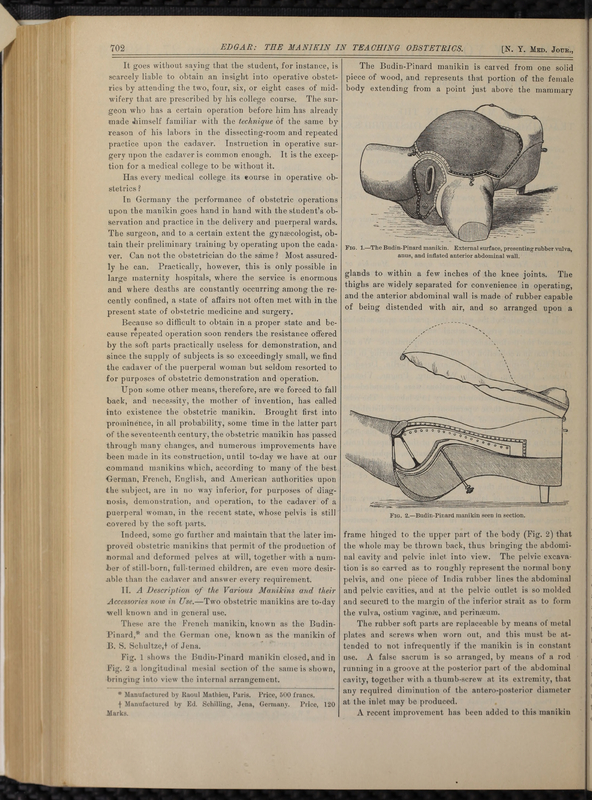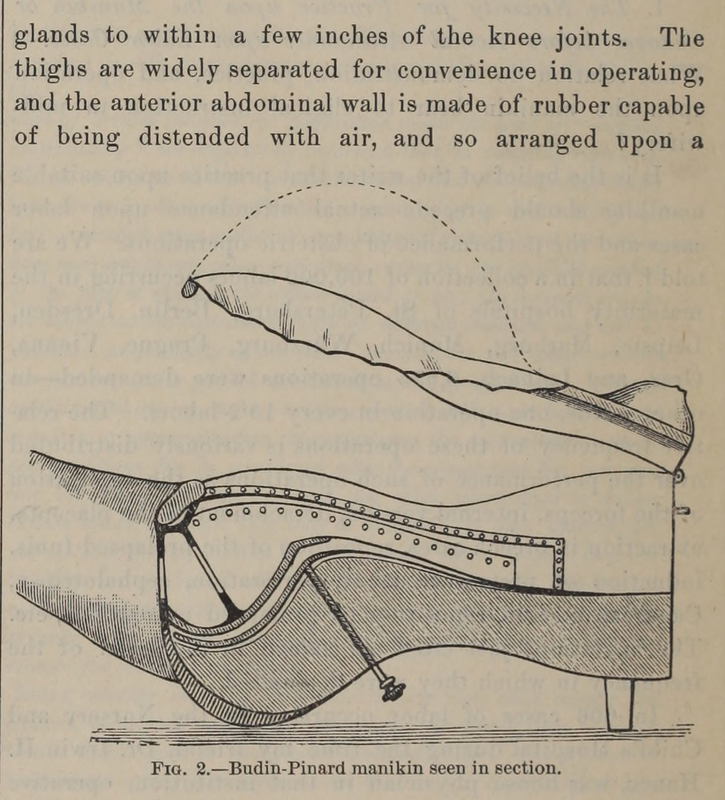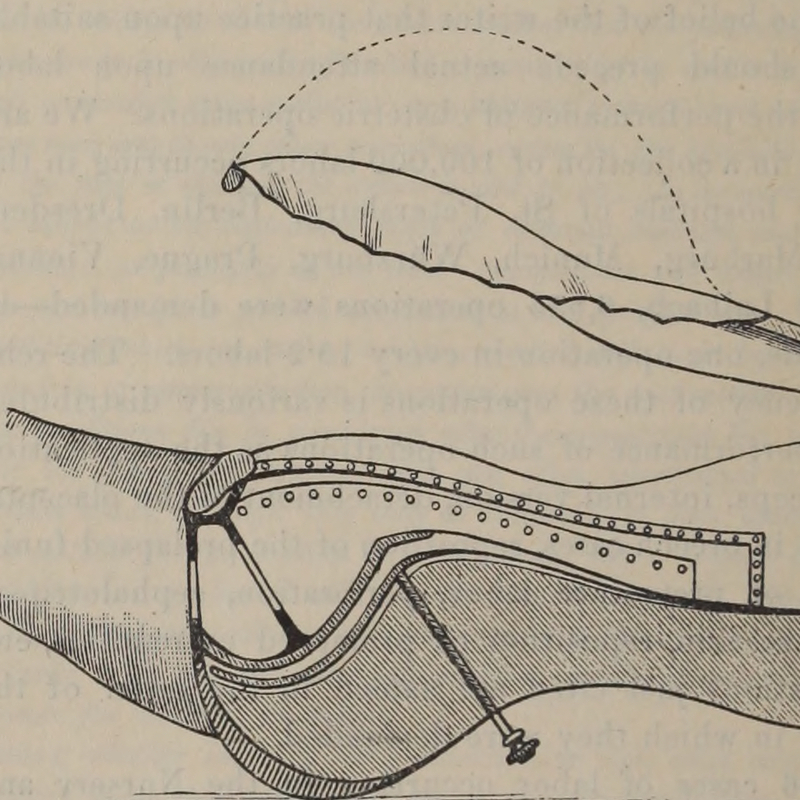Budin-Pinard Obstetric Manikin
Item
-
Title
-
Budin-Pinard Obstetric Manikin
-
Description
-
This page from J. Clifton Edgar’s “The Manikin in the Teaching of Practical Obstetrics,” published in “The New York Medical Journal” (December 1890), includes illustrations of a Budin-Pinard obstetric manikin, which was used to teach medical students. The illustrations are rendered in black and white and show the manikin with close attention to detail. The manikin represents the torso of a female body, from just above the breasts to a few inches above the knee. Crucial to the manikin’s function are its rubber vulva, anus, and inflated anterior abdominal wall. Whereas the manikin itself is made of wood and propped up with a small peg, the abdominal wall and genital area are made of rubber and appear to be attached to the base of the manikin with bands of adhesive material.
The article accompanying the illustration describes the manikin as follows: “the thighs are widely separated for convenience in operating, and the anterior abdominal wall is made of rubber capable of being distended with air, and so arranged on a frame hinged to the upper part of the body, that the whole may be thrown back, thus bringing the abdominal cavity and pelvic inlet into view. The pelvic excavation is so carved as to roughly represent the normal bony pelvis. And one piece of India rubber lines the abdominal and pelvic cavities. And at the pelvic outlet is so moulded and secured to the margin of the inferior strait as to form the vulva, vagina, and perineum” (702).
-
WHITNEY WOOD ON WHAT THIS OBJECT TEACHES US:
As Dr. Wood explains, the Budin-Pinard manikin was a piece of instructional equipment intended to provide students with a practical knowledge of various obstetric manipulations. The use of obstetric manikins (also known as simulators and phantoms) in training midwives dates back to the eighteenth century. Dr. Wood informs us that the first obstetric manikins were quite simple and used to demonstrate the physiological process of childbirth, as well as procedures such as the use of forceps in vaginal delivery. Over time, these manikins became increasingly elaborate in both construction and material. Dr. Wood suggests that their use and persistence into the closing decades of the nineteenth century can offer insight into the state of obstetrical education and knowledge in late-Victorian Canada.
The Budin-Pinard manikin shown here was developed by French obstetricians Stéphane Étienne Tarnier, Pierre Budin, and Adolphe Pinard. Dr. Wood notes that the first reference to the Budin-Pinard manikin appears in a report of the November 1877 meeting of the Obstetrical Society of London, where it was used in a demonstration of the application of forceps to the fetal head. A month after this initial demonstration, Tarnier exhibited the manikin at a meeting of the French Academy of Medicine. In the decade that followed, the Budin-Pinard manikin (also referred to as the Tarnier-Budin phantom) was used throughout Europe and, gradually, throughout North America as well.
In fall 1890, McGill University’s Faculty of Medicine announced improvements to their facilities, including the recent acquisition of an improved obstetric manikin. Shortly afterwards, in an address read before the New York Academy of Medicine in November 1890 and published in “The New York Medical Journal” the following month, American obstetrician J. Clifton Edgar posed this question: “How may the student, how may the practitioner, who has had no maternity service, obtain the requisite amount of practice and skill for the performance of obstetric operations in private practice? Is one justified in simply waiting for such cases to arise in this practice that may demand operative interference, in order to obtain the necessary dexterity?” (701). The obstetric manikin, it seemed, offered the answer. Edgar asserted that practice upon suitable manikins, including the Budin-Pinard model, should precede attendance at labour cases and performance of obstetrical operations.
By the late-Victorian period, Dr. Wood asserts, medical educators throughout Britain and North America were placing increasing emphasis on the value of clinical instruction. Students at both McGill and the University of Toronto in the 1890s were required to provide proof by ticket of having attended at least six cases of labour prior to graduation. Student narratives, however, call into question the instructional value of these clinical experiences and the extent to which curriculum requirements were actually enforced. These discrepancies, coupled with the shortage of hospital-based midwifery cases and pregnant cadavers (along with persisting taboos surrounding the examination of female bodies), meant that manikins continued to play an essential role. Many new physicians readily recounted in hindsight the shortcomings of their education and the challenges of being thrust into practice. According to Dr. Wood, obstetrical manikins like the Budin-Pinard model can be read in the context of anxieties surrounding the articulation of medical identities, knowledge, and expertise during a crucial period in the professionalization of obstetrics.
-
Rights Holder
-
Images courtesy of the Internet Archive; photographed from material in Columbia University Libraries





